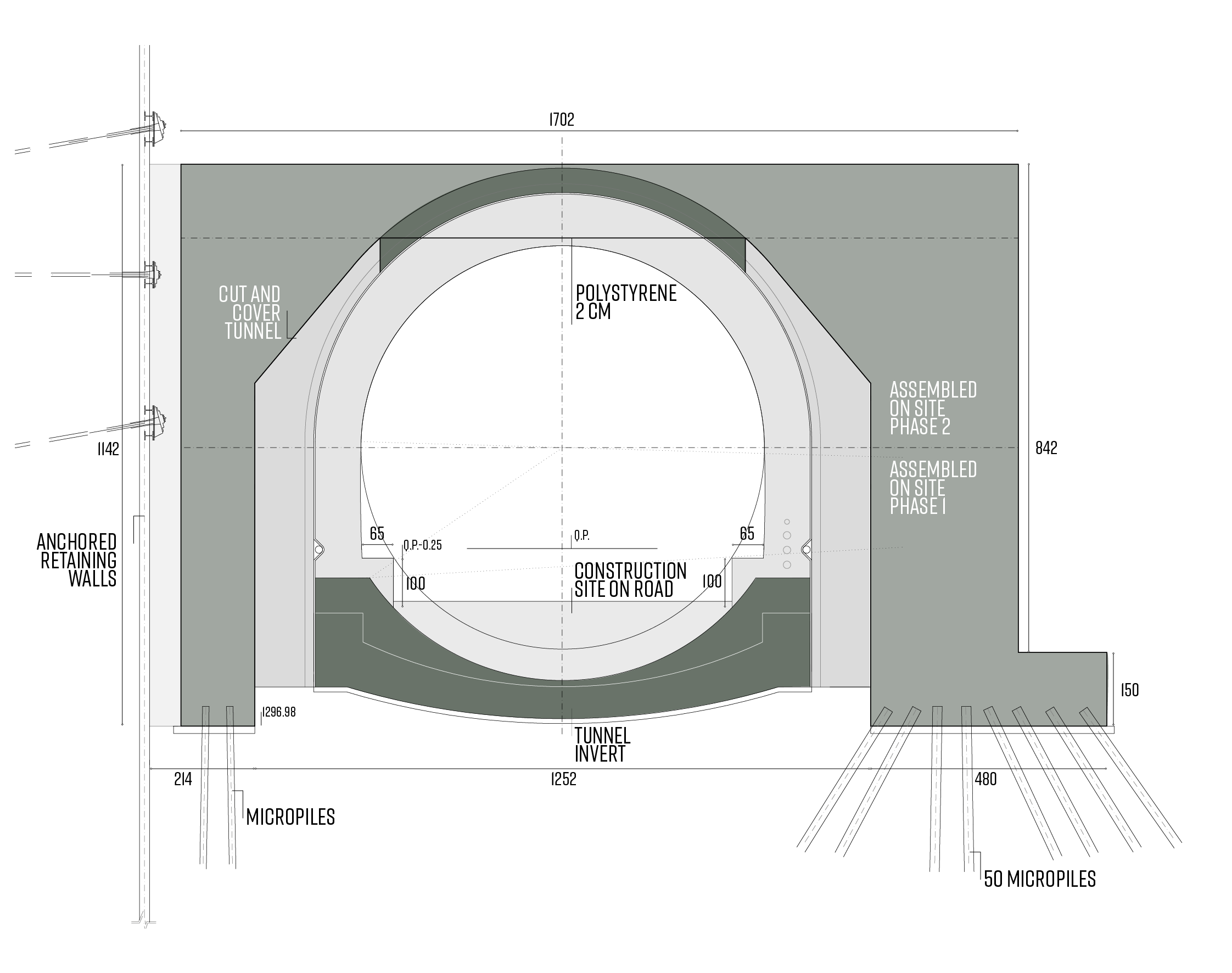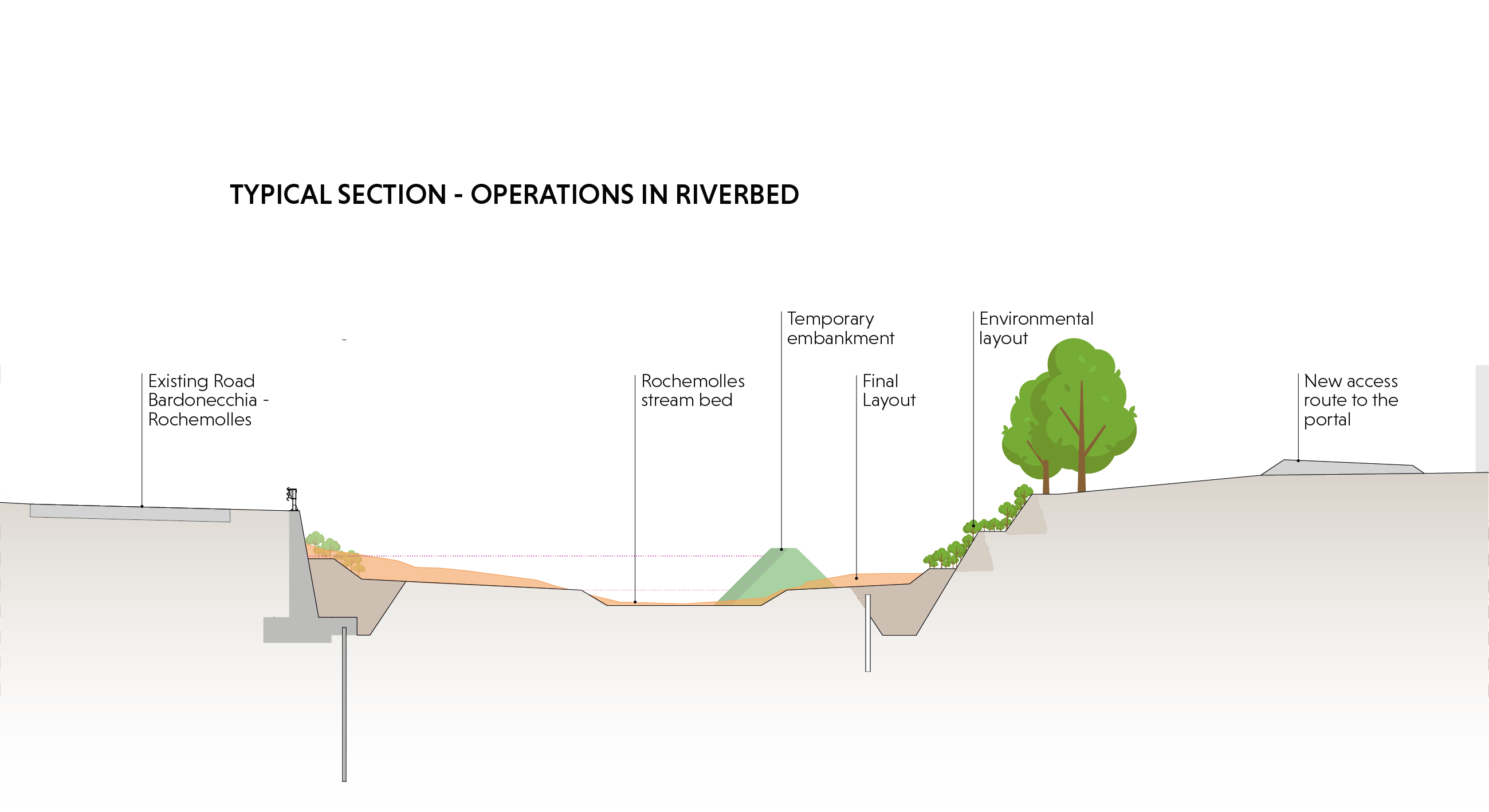The Italian section of the Frejus tunnel
The strategic role of the safety tunnel in the Italian-French connection.
The construction of the safety tunnel alongside the existing Fréjus road tunnel is one of the most significant construction sites in the national scene of public works. The tunnel is almost 13 km long (6.4 km of which in Italy) and has an excavation face 8 m in diameter. The strategic importance of the project lies in the updating of one of the busiest Alpine crossings to the latest tunnel safety standards, thus allowing an important development of the road network with France. On the Italian side, the current entrance to the Fréjus Road Tunnel is a little north of Bardonecchia, about 200 metres east of the railway line. The safety tunnel project set out the excavation of a tunnel east of the current one with a layout more or less parallel to that of the existing road tunnel.

Change of direction
At first, the project planned a safety tunnel 5 metres in diameter connected to the existing tunnel with by-passes for vehicles and pedestrians, with the aim of equipping the current tunnel with escape routes if there was a fire. After the fire of 2005, the Fréjus Safety Committee decided to amend the project creating a second tunnel with a diameter of 8 metres.
At the end of the work, there will be two one-way road tunnels connecting Italy and France, fitted with the latest safety installations and thus making the Fréjus tunnel the longest European double-barrel tunnel. The project for the new tunnel was completed by a series of external improvements like the access roads, works crossing watercourses, new buildings serving the safety installations (ventilation, electrical circuits, fire-prevention, etc.).
A multi-disciplinary challenge
The complexity of the work, which uses various excavation techniques – TBM and traditional technologies – to adapt to the different geological situations met, required a significant design commitment, which was handled through the integration of specialist technical and organisational skills. The multi-disciplinary design work led to the drafting of papers on various areas – geology and geotechnics, structures (bridges, tunnels and retaining walls), hydraulics, roads, environment, construction site set up, and safety. The design experience, but the construction site even more so, undoubtedly presented an invaluable opportunity for technical and methodological growth. The design and construction of such a long road tunnel poses a series of multi-disciplinary and human problems of enormous complexity. A large group of designers from three different Italian companies interacted, continuously co-operating, with the Works Management team, Fréjus Safety Committee and the French designers.

The tunnel was excavated using the same Single Shield TBM used in the French Lot I, purchased by the temporary consortium and subsequently adapted to the excavation of the Italian section. The excavation work continued for 491 days in which a total of 6.285 km of tunnel were dug. A traditionally dug section of 68 m with the shape and size to allow the subsequent passage of a TBM was created during the excavation with the TBM. The machine used for the excavation was then dismantled and removed from the construction site in April 2015. The particular nature of the excavation was due to crossing sections where the roof was very thick, more than 1,800 metres, which required continuous monitoring of the excavation parameters with the aim of preventing and keeping watch over any convergence. The creation of technical station 13/8 is currently in progress and the completion of the excavation of Shelter No. 34, used as storage for the explosives, is planned.
At the same time, the work for the new systems, especially the installation of the lighting and the ventilation and fire prevention systems, is being carried out.
The new tunnel has generated positive economic and social effects, enabling the passage of a new power line with very low environmental and landscape impact. The creation of a pilot project is also planned that would allow the extraction of the natural heat of Mount Fréjus and its enhancement for civil and domestic use. A singular aspect of the creation of works in the tunnel is that the final design stage has to be followed by a technical assistance service during construction which is able to adapt the original plans to the ‘in progress’ results of the site, and resolve any critical points met.
Progressive integration
Another specific point of the project was the need to ensure the progressive integration of the new safety tunnel with the existing, operational tunnel by making the new safety areas available keeping pace with the progress of the excavation face. The tunnel was fitted with the latest smoke and fire signalling equipment and temperature detection sensors along the route a short distance from each other monitored by a control room, called the Centralised Control Post. A hydrant system supplied by water tanks has been installed every 130 metres. Two thermographic portals have also been created and put at the entrances; they can detect whether there is abnormal heat-generation in the vehicles in transit. These specific items have led to a high level of attention both in the detailed planning of the operations and the management of the integration stage between the two tunnels. Currently, the excavation stage has ended and the tunnel will soon be commissioned.


